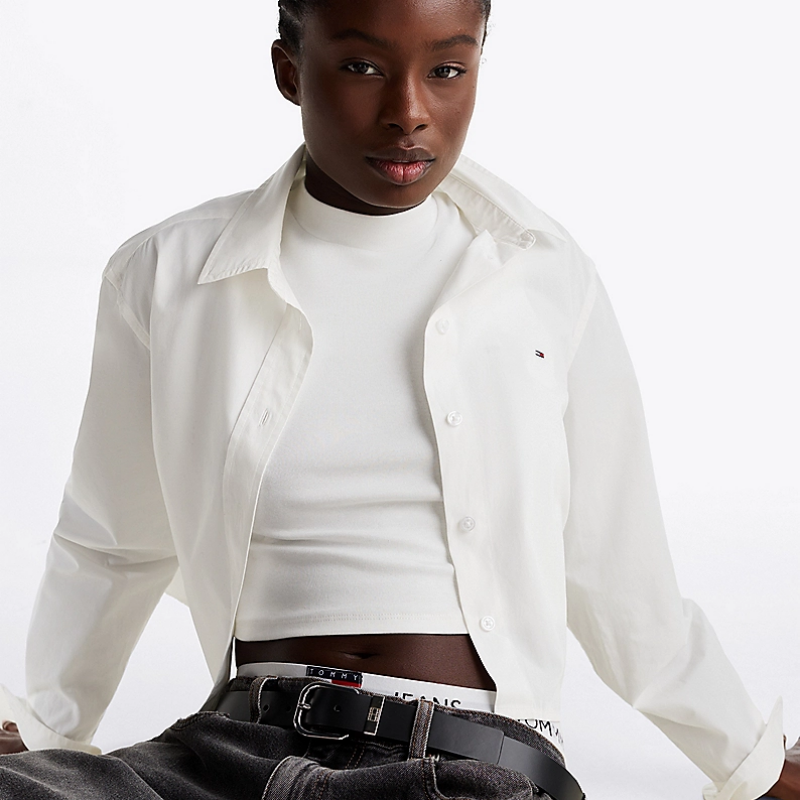Transforming an old dress into a stylish shirt is not just a sustainable way to refresh your wardrobe; it’s also a fun and creative endeavor. Whether you have a dress that no longer fits, one that you’ve grown tired of, or a vintage piece just waiting to be reinvented, you can give it a new lease on life as a fashionable shirt. This process allows you to unleash your creativity while also contributing to a more sustainable fashion ecosystem by reducing waste. In this comprehensive guide, we will explore multiple techniques, styles, and practical steps on how to turn a dress into a shirt. From casual tees to chic blouses, there are numerous possibilities to explore. Get ready to dive into the world of upcycling and self-expression!

Contents
Understanding the Potential of Your Dress
When considering how to turn a dress into a shirt, the first step is to understand the potential of the dress you are looking to transform. Examine its fabric, design, and overall structure. Consider the following questions:
- What is the fabric made of?
- Does it have any unique patterns or features, such as buttons, zippers, or pockets?
- Is it oversized, fitted, or something in between?
A loose, flowing dress may lend itself to a casual shirt style, while a form-fitting dress could be ideal for a more tailored look. Understanding the dress’s features will help shape your vision for the final outcome. Don’t be afraid to take risks! The beauty of this transformation lies in the freedom to express your unique style.
Gathering Your Materials
Before diving into the transformation process, ensure you have all necessary materials at hand. Here’s a quick checklist to help you get organized:
- Dress: Select a dress that you want to transform.
- Scissors: A sharp pair of scissors is crucial for clean cuts.
- Measuring tape: This will help you take accurate measurements.
- Sewing kit or machine: Depending on the complexity of your design, you may need to sew or simply hem the edges.
- Pins: Use pins to secure fabric before cutting or sewing.
- Chalk or fabric marker: Helpful for marking areas where you want to cut or sew.
- Optional embellishments: If desired, consider buttons, lace, or fabric dye for added customization.
Having these items ready will streamline the process, allowing you to work efficiently and creatively.
Selecting the Right Style for Your Shirt
How to turn a dress into a shirt can vary greatly based on the style you wish to achieve. Some potential styles to consider include:
- Casual Tee: Ideal for everyday wear, a relaxed fit can be crafted from a loose dress by simply cutting it down to size and adding short sleeves.
- Crop Top: An excellent choice for summer outfits, cutting a dress into a crop top can reveal that stylish midriff, perfect with high-waisted pants or skirts.
- Button-Up Blouse: If your dress boasts buttons down the front, consider transforming it into a button-up shirt. This style can be dressed up or down, making it versatile.
- Peplum Top: If your dress has a fitted waist, you can create a peplum effect by cutting it at the waist and flaring it out below.
Each of these options allows you to showcase different elements of your dress while ensuring a fresh approach to your wardrobe. Choose a style that reflects your personality and your fashion goals!

The Step-by-Step Transformation Process
Now that you have your dress and have decided on a desired style, it’s time to dive into the transformation process. Here is a step-by-step guide to assist you in how to turn a dress into a shirt:
Begin by putting on the dress to visualize how it fits. You might want to consider what alterations you’ll need. Use chalk to mark the areas you intend to cut.
Cutting the Dress
- Determine the Length: Measure where you want the shirt to fall. Mark this length with chalk.
- Mark Sleeve Placement: If your design includes sleeves, decide on their length and placement.
- Make the Cut: Carefully cut along the marked lines to remove any excess fabric.
Hemming the Edges
Hemming the raw edges will prevent fraying and give your shirt a polished look.
- Fold the Edges: Fold the cut edges inward about half an inch and pin them to secure.
- Sew the Hem: Use a sewing machine or needle and thread to sew the hem down. A straight stitch will typically work well, but you can choose a decorative stitch if you’d like!
Adding Elements
Depending on your chosen style, you might want to add additional elements, such as sleeves, buttons, or even pockets:
- Sleeves: If you want to add sleeves, cut fabric from the dress or a coordinating fabric. Attach them by sewing them onto the armholes.
- Buttons: For a button-up style, ensure that the button placement is consistent and correctly aligned. Sew each button carefully to avoid it coming loose.
- Pockets: If you want to add pockets, cut two pieces of fabric in your desired shape and sew them to the front of the shirt.
Styling Your New Shirt
Once you’ve transformed your dress into a shirt, the next step is to style it! Here are some tips to showcase your creation:
- Pair It Up: Match your shirt with high-waisted jeans, tailored pants, or a skirt that complements the new shirt’s vibe.
- Add Accessories: Accessories can elevate your outfit. Consider adding statement jewelry, a chic belt, or a stylish handbag.
- Layer It: Layer your new shirt under a blazer, cardigan, or denim jacket for a trendy look that can take you from day to night.
The way you style your newly created shirt can significantly enhance its appearance and give you countless outfit combinations.
Caring for Your Transformed Shirt
To ensure the longevity of your transformed shirt, it’s essential to take proper care of it. Follow these care instructions:
- Washing: Often, gentle washing in cold water is the best choice. Check the care label of your original dress material for specific instructions.
- Drying: Air-drying is preferred to maintain shape and prevent shrinking; avoid direct sunlight to prevent fading.
- Ironing: If necessary, iron your shirt on the lowest heat setting suitable for the fabric type.
By taking care of your new piece, you ensure it remains a favorite in your wardrobe for years to come.
Learning from Mistakes
The process of transforming clothing is often experimental, and it’s natural to encounter challenges along the way. Here are some common pitfalls to be aware of and ways to overcome them:
Measurement Errors
One frequent mistake is miscalculating measurements, leading to an awkward fit. To avoid this, take your time measuring and ensure you have clear guidelines for desired dimensions before cutting.
Fabric Limitations
Certain fabrics may not hold up well during cutting and sewing. Stretchy materials may pose challenges. Consider practicing with scrap pieces before working on your main dress.
Underestimating Time
Some may underestimate the time required for the transformation process. Allow yourself ample time, especially if you’re trying new techniques. It’s okay to take breaks and return to the project refreshed.
Expanding Your Skills
As you become more comfortable transforming clothing, you may find a passion for sewing and DIY fashion. Here are ways to expand your skills further:
Take Classes
Look for local sewing classes or online workshops that allow you to learn from professionals. Topics may include advanced sewing techniques, pattern making, or upcycling.
Experiment with Patterns
Using patterns can elevate your DIY projects. Start by experimenting with basic patterns to understand how they work before adapting them to your designs.
Collaborate with Other Crafters
Engaging with other crafters opens the door to new ideas and techniques. Join local crafting groups or online forums to exchange tips and build a supportive network.

Final Thoughts on Sustainable Fashion
As the fashion industry increasingly embraces sustainability, your efforts in learning how to turn a dress into a shirt contribute positively to this movement. By repurposing old garments, you not only save money but also reduce the demand for fast fashion.
The skills developed through upcycling encourage creativity and personal expression, allowing you to engage with your wardrobe in new ways. The next time your closet feels uninspiring, remember that with a little ingenuity, you can breathe new life into your clothing. Transforming a dress into a shirt is just the beginning—a gateway to a sustainable and personalized fashion journey.
By continuing to embrace sustainable practices, you empower not just yourself but also those around you to reconsider how they approach their fashion choices. Together, we can cultivate a movement that values creativity, innovation, and respect for our planet.



